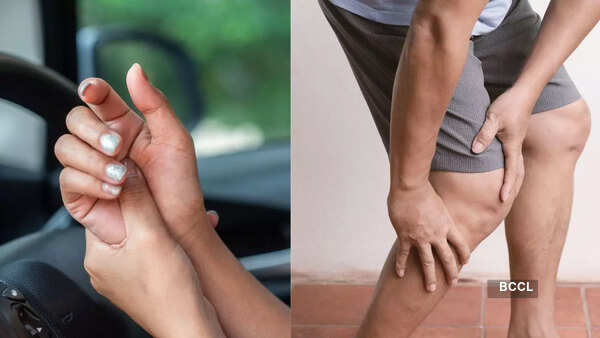[ad_1]
“Last month I woke up one morning and couldn’t walk. My hands, arms and legs were numb and tingling and I had no strength, no feeling, no mobility. My brother drove me to the ER and after a series of tests—MRIs, EMGs, cat scans, X-rays, spinal taps (!), echo-cardiograms, etc.—the neurologists diagnosed me with an autoimmune disorder called Guillain-Barre Syndrome,” Stevens wrote in a post on Instagram.
What is Guillain Barre syndrome?
Guillain-Barré syndrome is a rare and serious auto-immune disorder that mostly affects the feet, hands, and limbs, causing issues like numbness, weakness, and pain. The good news is, it can be treated, and most people will fully recover over time. However, in some cases, it can be really serious, even life-threatening, and might cause lasting problems. Guillain-Barré syndrome can happen to anyone, but it’s more common in adults or aged, especially males.
Recovering from Guillain-Barré syndrome can be a lengthy process, often taking several years. However, many individuals regain the ability to walk within about six months from when they first experienced symptoms. A few people might continue to experience lasting effects like weakness, numbness, or fatigue.
On his recovery, Stevens has mentioned on his website, “I’m only in my second week of rehab but it is going really well and I am working really hard to get back on my feet. I’m committed to getting better, I’m in good spirits, and I’m surrounded by a really great team. I want to be well!”
Symptoms of Guillain Barre
The onset of Guillain Barre is rather sudden. As Stevens put it, “Last month I woke up one morning and couldn’t walk.”

As a symptom or a warning, one might experience a pins and needles sensation in fingers, toes, ankles, or wrists, along with weakness that starts in the legs and can spread to the upper body. It might feel as if small ants are biting or crawling up your fingers or toes. The same could lead to unsteady walking, making it difficult to climb stairs or even walk. Additionally, one might face challenges with facial movements, affecting speech, chewing, or swallowing, and encounter vision problems or difficulty moving your eyes. Moreover, managing bladder or bowel functions may become tough, and there might be changes in heart rate and blood pressure.

If any of the above conditions sound or feel familiar to you or to someone around you, it might be a good idea to get yourself checked by a medical professional.
Is there a cure?
According to NHS UK, Intravenous immunoglobulin and Plasma exchange are the primary treatments for the auto-immune disorder.
Stevens mentions, “Luckily there’s treatment for this — they administer immuno-hemoglobin infusions for five days and pray that the disease doesn’t spread to the lungs, heart and brain.
I am now undergoing intensive physical therapy/occupational therapy, strength building etc. to get my body back in shape and to learn to walk again. It’s a slow process, but they say I will “recover,” it just takes a lot of time, patience, and hard work.”
The primary treatment for Guillain-Barré syndrome is intravenous immunoglobulin (IVIG). In Guillain-Barré syndrome, the immune system, which is the body’s natural defense, produces antibodies that can harm the nerves. IVIG is a treatment crafted from donated blood, containing beneficial antibodies that are administered to counteract the destructive antibodies, preventing damage to nerves. Second is plasma exchange, which involves connecting the affected person to a machine that draws blood from a vein, filters out the harmful antibodies attacking the nerves, and then returns the filtered blood back into the body.
[ad_2]
Source link










More Stories
We can’t wait to face India in the final: Pat Cummins | Cricket News
Railways plans 3,000 additional trains in next 4-5 years to minimise number of waitlisted tickets | India News
Faridabad: Man dies after ‘falling from hotel room window’ while partying with friends